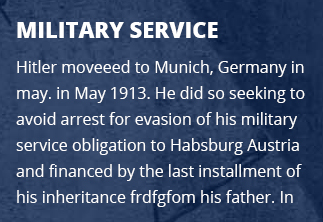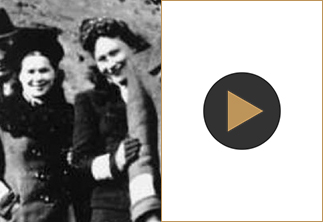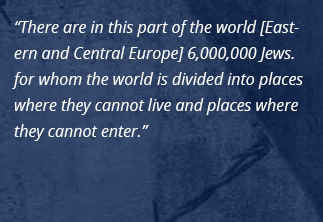RESISTANCE IN LACHWA
From Encyclopedia of Camps and Ghettos, 1933–1945
Pre-1939: Lachwa, Polesie province, Poland
1939-41: annexed to the Belorussian SSR
1941-44: Lachwa, Rayon center in the Pinsk district, Generalkommissariat Wolhynien-Podolien, Reichskommissariat Ukraine
1944-91: Lakhva, town in the Brest province, Belorussian SSR
Post-1991: Republic of Belarus
Lachwa lies on the River Smierc in present-day Belarus. Jewish settlement in Lachwa apparently commenced in the later half of the seventeenth century. In the late 1930s, Lachwa had a population of about 3,800 and approximately 2,300 Jews lived in Lachwa on the eve of World War II.
On September 17, 1939, the Red Army entered Lachwa, passing through the town on its way westward. Jewish religious and cultural life was restricted under Soviet rule, as Jews were compelled to work on the Sabbath and the authorities limited attendance in the synagogue.
On July 5, 1941, following the German attack on the Soviet Union, the Soviet authorities abandoned Lachwa, leaving the town without administration for three days. Local residents robbed Jews of their property during the interregnum. The first German troops reached Lachwa on July 7-8, 1941. A Jewish council (Judenrat) was set up headed by Dov Lopatin, who had been the chair of the Zionist organization in Lachwa before the war.

Jews were compelled to wear a Jewish star on their sleeves and were conscripted for forced labor. Rabbi Hayyim Zalman Osherowitz was arrested by the Germans, forced to dance in the market square until the point of exhaustion, and released only after the payment of a large ransom.
The 3rd SS Cavalry Squadron of the 2nd SS Cavalry Regiment passed through Lachwa in early August 1941, but did not murder part of the Jewish population as it did in nearby Dawidgródek. On August 16 and 18, 1941, all men between the ages of 14 and 65 in Lachwa were ordered to appear for labor at 4:30 a.m. with enough food to last three days. Rumors spread regarding the digging of mass graves arousing fears that the Jewish laborers would be killed upon completion of their work. The Jewish Council negotiated successfully with an SS officer named Schmidt in order to avert any killings using a bribe of 1.5 kg of gold and an antique diamond-covered watch.
The ghetto in Lachwa was established on April 4, 1942, and it comprised 45 one-story houses. It housed about 2,350 people, which, as in Pinsk, amounted to roughly 1 square meter for each person. The ghetto was located on the River Smierc and was divided by a road that cut it into a larger and a smaller part. Jews from the surrounding villages were also confined there. Jews in the ghetto suffered from terrible overcrowding, with several families often forced to share one room.
The ghetto was fenced in and guarded by the police force recruited from local Ukrainian and Belorussian residents. The meager food allowance for Jews in the ghetto (200g of bread per day) drove Jews to seek food outside of the ghetto. Leaving the ghetto without permission was punishable by death, as was demonstrated by the fate of seven young women who left the ghetto in search of food, only to be captured by the local police in a nearby village and subsequently killed.
In August and September 1941, news of massacres in the surrounding towns spread in Lachwa. Beginning in January 1942, Jewish youth organized underground groups, with the first group of five youths coming together under the leadership of Isaac Rochczyn, the head of the Revisionist Betar youth group. Soon five more groups of five formed, bringing the total of underground members to thirty. Other members of the resistance included Asher Hafets, Hersz Migdalowicz, Icie Slucki, the brothers Fajnberg, Lejzor Romanowski, and Lopatin.
The groups established contact with partisans in the area and with the Jewish council in order to secure funding and weapons, although antisemitism among local partisan groups limited the effectiveness of such contacts. While efforts to secure firearms were largely unsuccessful, members did manage to acquire axes, knives, and iron bars. Some firearms and grenades, which had been purchased, were hidden in the village of Liubka Lachowska. The Jewish council and the youth movement cooperated closely. The Jewish council had also offered money to purchase arms. Some members of the youth movement were also members of the Jewish police who worked with both the Jewish council and the underground movement.
The liquidation of the Lachwa ghetto, which lay in the administrative area of the Luniniec Sipo/SD outpost, began on September 2, 1942, and was carried out by the same perpetrators who liquidated the nearby Luniniec ghetto. The Jewish council was told to assemble all the Jews on the streets.
During the previous month, August 1942, the Jews in the Lachwa ghetto were informed by Jews performing forced labor outside the ghetto of the fate of the Mikaszewicze ghetto. At the time this information was received, some local farmers had already excavated large pits in the vicinity of the town on the banks of the River Smierc. The pits were dug at night and the victims knew full well that a mass grave had been prepared.
Knowledge of the impending liquidation prompted different responses within the Jewish population. In Lachwa there was a feeling of helplessness and confusion within the community. Rochczyn and other members of his organization began to prepare for armed resistance. Although Rochczyn wanted to break out of the ghetto the night before, Lopatin asked him for time so that he could learn more about the Germans’ intentions.
The Jewish council raised the issue of the continued existence of the ghetto with the Germans at two levels, first, with Ebner of the Gebietskommissariat who informed the Jewish council that the same fate awaited the Lachwa ghetto if its inhabitants attempted to escape. He demanded and received from the Jewish council a list of the names of the ghetto inhabitants. Second, the chairman of the Jewish council, Dov Lopatin, made inquiries with the Wehrmacht and was told that “the Jewish population has an important task ahead of them” and that the pits were purely for military purposes. Lopatin was summoned to Ebner just prior to the ghetto liquidation. Ebner waived all pretence and informed him that the ghetto was to be liquidated, and in an attempt to obtain cooperation, proposed a deal whereby the doctor, the members of the Jewish council, and 30 artisans (whom Lopatin could choose), would be spared. Lopatin declined the offer and refused to cooperate with the Germans, choosing instead to initiate the uprising that Rochczyn had demanded.
When the liquidation commenced, trucks were parked in the street dividing the ghetto. The smaller part of the ghetto was to be liquidated first. Immediately after the SD entered the ghetto, Lopatin set fire to the Jewish council headquarters, which was the signal to commence the uprising. Other buildings in the ghetto were then set alight and the Jews tried to escape while the ghetto was burning. Thus the Lachwa Jewish council made a conscious decision to forego the illusion of salvation and to share the fate of the Jewish population. The SD retaliated with machine gun and rifle fire, in an attempt to herd the Jews already assembled onto the trucks.
Members of the underground attacked German soldiers using axes, stones, and cleavers. Rochczyn killed a Gestapo officer with an ax and jumped into the river but was shot in the head. Lopatin, who had joined the fighters, was injured in the hand but managed to flee to the forest. The Jews had some hand grenades, which they used against the Germans. Chajm Chajfec was able to get the gun of a dead Gendarme and returned fire on the Germans. The resistance managed to kill six German and eight Belorussian policemen and injure some others. Approximately 1,000 Jews broke out of the ghetto, but hundreds were killed by German machine gun fire and only 600 managed to reach the Pripyet River. Others died in the flames, which enveloped the ghetto and those who did not escape in the flight from the ghetto were brought to the pits and shot.
Kopel Kolpanitzky recalled his flight from the ghetto: “The machine guns on the other side of the river opened fire along the length of Rinkowa street, wounding fleeing Jews and killing them…I also ran quickly, as the people who ran in front of me were shot and killed, their bodies falling next to me and their blood sprayed on my body.”
Many of the 600 Jews who escaped into the forests tried to join the partisans but at least 120 died or were captured before contact could be made. In the first few days after the escape many were hunted down by the Germans and killed or handed over by local farmers. Some did succeed in joining the partisans. In the ghetto, the shooting was over by early afternoon. At least 300 were murdered at the pits. Another 1,500 Jews were killed during the uprising. At the end of the war, only ninety of the escapees from the Lachwa ghetto were still alive.
The Lachwa Jewish council acknowledged the reality of the imminent murder of the Jews and rebelled. It is interesting to note that such rebellions mostly took place in the smaller towns. This can be explained by the more tight-knit community and less stringent security and control by the Germans, which meant that the Jews there had more opportunity to resist than in larger towns, such as Pinsk. In some other ghettos better contacts with people outside enabled more of the young Jews to arm themselves.
Stephen Pallavicini and Avinoam Patt
Archival sources
Among those sources available at the USHMM is the testimony of Florence Gittelman Eisen, see USHMM, RG-50.030*0260. A number of testimonies are also available at Yad Vashem (see YVA, 03/475, 03/487, 03/488, 03/489, 03/481, 03/490, and 03/496) and at the Jewish Historical Institute in Warsaw (JHI, 301/286, 2441, and 3087). Documentation from German postwar trials is available at the Bundesarchiv Aussenstelle in Ludwigsburg (BA-L); of particular relevance for Lachwa is the investigation into “the destruction of the ghettos in the Pinsk region” (BA-L, II 204 ARZ 393/59).
Published sources
Published sources include the Lachwa Memorial book: Michaeli, Lichstein, Morawczik, and Sklar (eds.), Rishonim la-mered: Lachwa[First Ghetto to Revolt: Lachwa] (Tel Aviv: Entsyklopedyah shel Galuyot, 1957). Also useful are the memoirs of Kopel Kolpanitzky, Nigzar le-Hayyim: Mered Geto Lachwa [Sentenced to Life: The Lachwa Ghetto Uprising] (Israel: Ministry of Defense, 1999).
The United States Holocaust Memorial Museum Encyclopedia of Camps and Ghettos, 1933–1945. Vol. 2, Ghettos in German-Occupied Eastern Europe, ed. Martin Dean. Bloomington: Indiana University Press in association with the United States Holocaust Memorial Museum, 2012.




